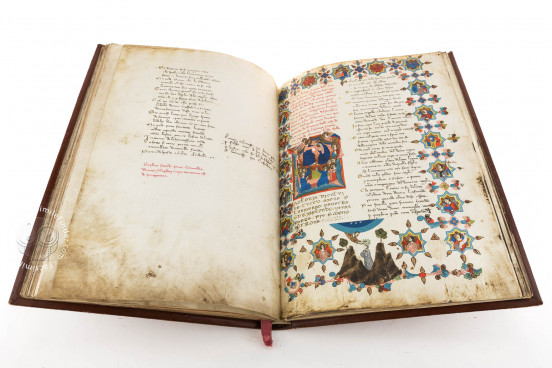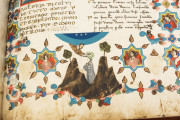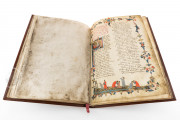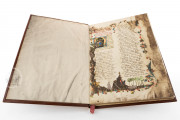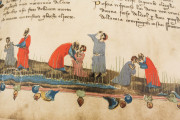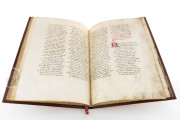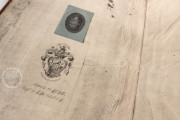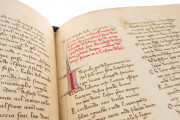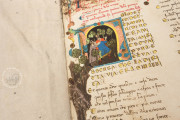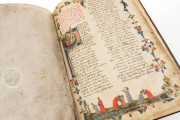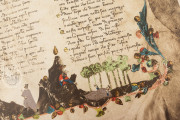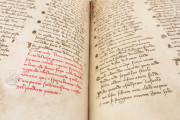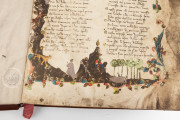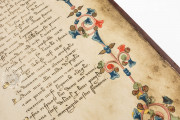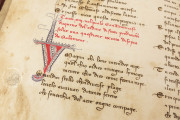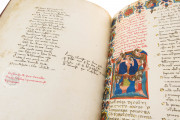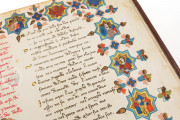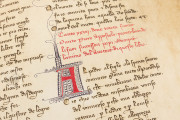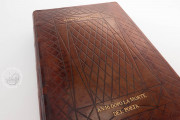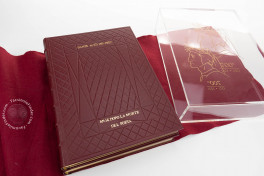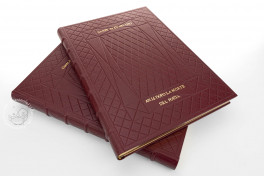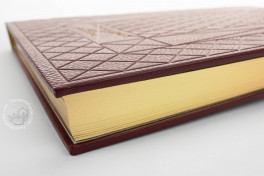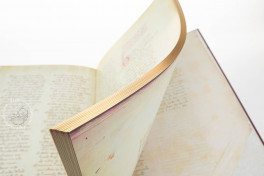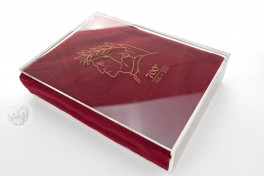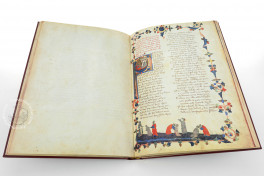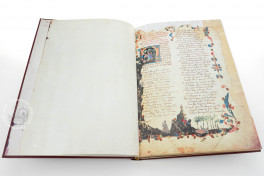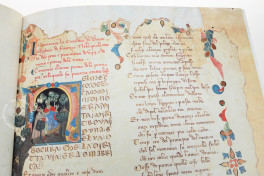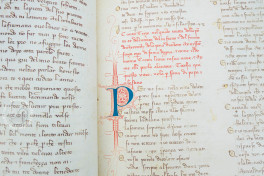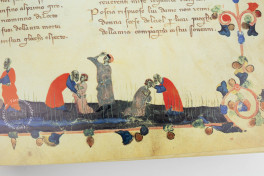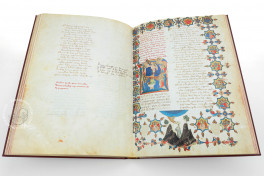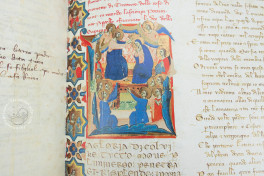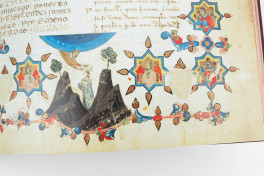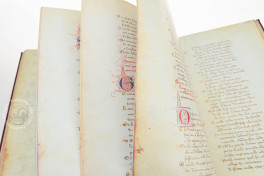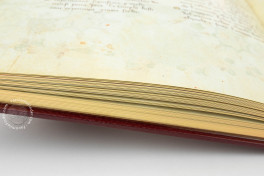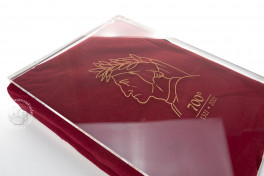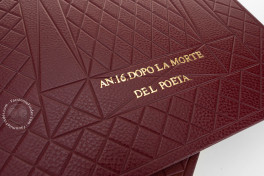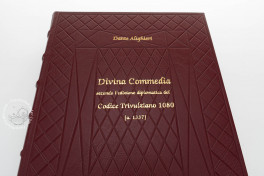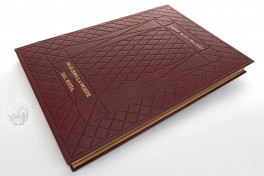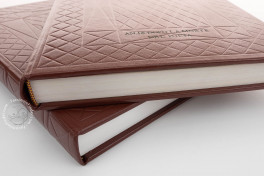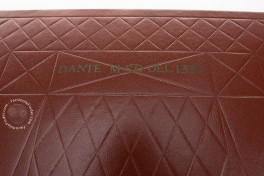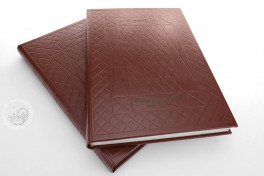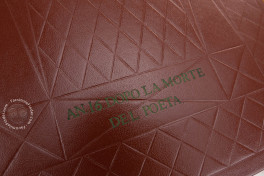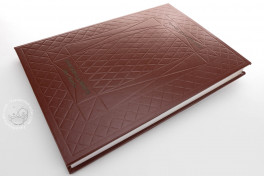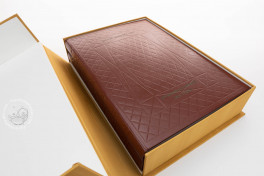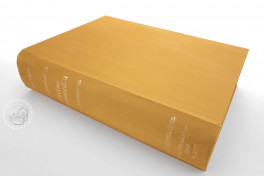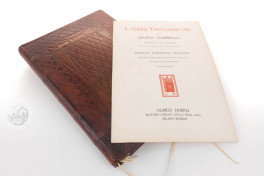Copied in 1337 in Florence by Francesco di ser Nardo da Barberino, the Trivulziano 1080 Manuscript features one of the earliest and most treasured copies of Dante's Divine Comedy, along with commentaries by Iacopo Alighieri and Bosone da Gubbio. The elegant cancelleresca script is complemented by fine illumination attributed to the Master of the Dominican Effigies.
One of the Oldest Extant Copies of Dante's Text
The Trivulziano manuscript is one of the so-called "Danti del Cento," a group of manuscripts of the Divine Comedy copied in Florence in the 1330s and 1340s. From a philological point of view, the manuscript is regarded as among the most important witnesses to the text.
Among the "Danti del Cento"—all manuscripts of medium-large size on parchment, with the text written in two columns and a high level of decorative apparatus—the Trivulziano manuscript is one of only two bearing both the date of composition and the name of the copyist. The date, 1337, is particularly significant, being only sixteen years after Dante’s death.
A Text Inviting Commentary
Dante's lengthy poem, which is an allegory of the soul's search for God cast in the form of journey through the otherworld, immediately attracted commentary to help readers understand it. Two short early guides—by Iacopo Alighieri, the poet's son, and Bosone da Gubbio—follow Dante's text in the Trivulziano codex. The Capitolo by Iacopo Alighieri outlines the structure and content of the work, and Bosone da Gubbio's Capitolo offers an explanation of the meaning of some of the most significant allegories.
The First Illustrations of Dante's Comedy
The painted decoration of the Trivulziana codex constitutes the earliest surviving illustration of Dante's text. The illuminator, known as the Master of the Dominican Effigies, who was both a panel painter and illuminator, was active in Florence in the 1330s and 1340s and completed a number of important commissions for both religious and secular patrons. His work in the Trivulziano Dante displays his customary precision in drawing and clarity of expression.
Each of the three sections of the Comedy begins on a page with an elaborate border and a large historiated initial. The initials for Inferno (fol. 1r) and Purgatorio (fol. 36r) show Dante and his guide Virgil. The initial for Paradiso (fol. 70r) depicts the Coronation of the Virgin in the presence of the heavenly court. The painted borders feature foliate motifs for Inferno and Purgatorio and a blessing Christ and angels in quatrefoils for Paradiso. The bas-de-page of each page includes a scene or scenes from the poem.
Each canto is introduced by a rubric and a three-line Lombard capital letter in alternating colors of blue and red. They are pen flourished in alternating colors—red (for the blue initials) and purple (for the red initials). Each terzina begins with a capital set out into the margin touched in pale yellow.
From an Unknown Patron to the Collection of Gian Giacomo Trivulzio
It is unknown for whom the manuscript was made, but it was in all probability someone of high social standing. In the bas-de-page of the first page of Paradiso (fol. 70r), two heraldic shields have been effaced. They were certainly a part of the page's original design and may once have displayed the arms of the first owner.
By the fifteenth century the manuscript had traveled from Tuscany to the Veneto region, as suggested by the dialect of a note added on fol. 69v. The codex probably stayed in the Veneto until 1812, when the volume was purchased by the collector Gian Giacomo Trivulzio (1774-1831) following the Napoleonic suppression of the monasteries. The volume then passed to the library of Gian Giacomo Trivulzio di Mosocco (1839-1902). The city of Milan acquired his collection from his son Luigi Alberico Trivulzio (1868-1938) in 1935 and added it to the city's archives housed at the Sforza castle to form the Archivio Storico Civico e Biblioteca Trivulziana.
Binding
The binding, which dates from the eighteenth or nineteenth century, is of brown leather, blind ruled in a geometric pattern, with a title stamped in gold on the front cover: "Dante m[ano]s[critt]o del 1337. An[ni] 16 dopo la morte del poeta" (Dante manuscript of 1337. Sixteen years after the poet's death).
We have 3 facsimiles of the manuscript "Divine Comedy - Trivulziano 1080 Manuscript":
- Divina Commedia Codice Trivulziano (Deluxe Edition) facsimile edition published by Editrice Velar, 2000
- Divina Commedia Codice Trivulziano (Standard Edition) facsimile edition published by Editrice Velar, 2000
- Codice Trivulziano 1080 facsimile edition published by Hoepli, 1921

